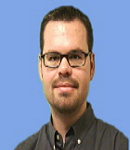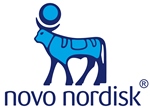Day 1 :
- Track 1: Novelties in Pre-filled Syringe products
Track 5: Trends and Challenges in Formulation and Development
Track 9: Global Market Trends in Injectables and Parenterals
Track 10: Technical and Regulatory Challenges of Parenterals and Autoinjectors
Session Introduction
Gulay Yelken Demirel
Sanovel Pharmaceuticals, Turkey
Title: Challenges in parenteral formulation development studies and an evaluation from QbD point of view

Biography:
Gulay Yelken Demirel has a degree in Department of Chemistry from University of Gazi (Ankara, Turkey) followed by a Master’s degree at Medicinal and Pharmaceutical Chemistry (faculty of pharmacy) from same university. She is also a Turkish Patent Attorney. She has nine years experience in R&D department of generic pharmaceutical companies. She worked as formulation scientist at the Pharmaceutical Technology Department of Nobel Pharmaceuticals.
Abstract:
Parenteral dosage forms differ from all other pharmaceutical dosage forms, because they are injected directly into body tissue through the primary protective systems of the human body; the skin and mucous membranes. They have many advantages like routes of administration, elimination of first pass effect, better absorption. They can be in a solution, suspension, emulsions, dry powders with freeze drying as well as microcapsules, nanoparticules or micro emulsions. But there are some limitations for formulation development studies like drug stability, poor solubility, packaging, controlling the quality of these unique products, sterilization methods, evaluation of parenteral dosage forms issues. So, What are the main formulation development steps for a new parenteral drug products? And what about QbD development approach for parenteral dosage forms? Parenteral dosage forms represent excellent opportunities for life cycle management to the pharmaceutical companies. What about the future of parenteral dosage forms formulations? Sustained release drug delivery, such as depot formulations which are already available at the market, may be a good alternative.

Biography:
Diane Paskiet has over twenty years of experience in packaging analysis. She has served as a project advisor in support of qualification studies associated with drug containment systems for regulatory fi lings. Her current responsibilities include coordination of study plans for technical support of packaging components and R&D. Previous to this role she was in charge of site operations for West-Monarch Analytical Laboratories. She is serving a five year term on the United States Pharmacopeia (USP) Packaging, Storage and Distribution Expert Committee and a co-recipient of the USP award for Innovative Response to a Public Health Challenge. She is Chair of the PQRI Parenteral and Ophthalmic Drug Product (PODP) Leachables and Extractables Working Group and a faculty member of the PDA Training Institute, as well as author/co-author of papers on the subject of pharmaceutical packaging
Abstract:
The Product Quality Research Institute (PQRI) is a non-profi t consortium involving industry organizations, academia and regulatory agencies that together provide recommendations in support of regulatory guidance to advance drug product quality. The collaborative activities of the PQRI Leachables and Extractable Working Group resulted in a systematic and science-based approach to identify and qualify leachables, including the concept of safety thresholds. Concepts from this widely accepted approach were formally publicized in 2006 for Orally Inhaled and Nasal Drug Products (OINDP) and are being extrapolated to parenteral and ophthalmic drug products (PODP). Chemist and Toxicologist are working together to generate and share data to demonstrate these same principles for parenteral dosage forms. The PODP recommendations consider factors associated with dose, duration, patient populations, and other product/user attributes. The recommendations for thresholds and best practices for PODP are currently being drafted. This presentation will give background on leachables and extractables from packaging materials and describe risk based approaches for qualifying leachables in parenteral drug products based on PQRI recommendations.
Bill Hartzel
Catalent Pharma Solutions, USA
Title: Addressing the market demands of parenterals through innovation and risk mitigation that drives reliable supply

Biography:
Bill Hartzel is the Director of Strategic Execution at Catalent Pharma Solutions, a global leader in development solutions and advanced drug delivery technologies. In this role, he is responsible for the implementation of a full suite of advanced aseptic processing solutions for biologic and complex pharmaceutical liquid products. He provides a strong background in advanced aseptic processing in blow/fi ll/seal and plastics in which he has numerous publications and presentations on the topics. Additionally, he has been a leader in the single use “disposables” industry since 2006 for his background in materials of construction. He is on the Board of Directors for BPSA, a Technical Author for PDA –TR 66 on Single Use Manufacturing, and the former Chairman of the ASME BPE Task Group for Single Use. He has an undergraduate degree in Chemical Engineering and an MBA from Villanova University
Abstract:
This presentation will focus on the use of the advanced aseptic filling techniques utilized in blow/fill/seal technology to create a glass-free injectable platform for biologics. It will provide details on how the principles of QbD are leveraged in the equipment and process design to dramatically reduce the risk profile and particulate contamination in parenteral filling through control and automation. In addition, the presentation will provide a case study of a model mAb and its compatibility with the BFS vial compared to glass.
Jim Polarine
STERIS Corporation, USA
Title: Case studies of human fl ora and spore contamination in clean rooms

Biography:
Jim Polarine is a technical service manager at STERIS Corporation. He has been with STERIS Corporation for over fourteen years. His current technical focus is microbial control in cleanrooms and other critical environments. He has lectured in North America, Europe, Asia, and Latin America on issues related to cleaning and disinfection in cleanrooms. He is a frequent industry speaker and published several PDA book chapters and articles related to cleaning and disinfection and contamination control. He is currently co-authoring articles. He is active on the PDA task force on cleaning and disinfection and the PDA task force on Microbial Deviations and a co-author on the technical reports. He is a member of the PDA’s Environmental Monitoring Group, Contamination Control Group, and Biotech Interest Group
Abstract:
Staying ahead of the curve in regard to Environmental Monitoring requires an understanding and an anticipation of the constantly changing microbial climate of the pharmaceutical manufacturing process. Knowing the characteristics of the environments in that process provides the benefit of allowing us to predict and solve potential future microbial control issues. This session will discuss pathways to use the data obtained from environmental monitoring to provide proactive and practical solutions for comprehending and managing everyday pharmaceutical microbiology challenges. The start-up and control of cleanroom facilities will also be covered as well as meeting regulatory expectations. This presentation will cover case studies on human flora and spore contamination in clean room operations. Solutions will be discussed to proactively present future contamination issues. The seminar will cover the most common causes of contamination: Operators, items brought into the cleanroom, and degradation of the cleanroom over time. Case studies in operator borne contamination will be discussed as well as preventative long term solutions. Specific examples of aerobic and anaerobic vegetative bacteria will be highlighted and analyzed. Items brought into cleanrooms that can harbor fungal and bacterial spores will be discussed as well as specific case studies highlighting examples where sources were items brought into the cleanroom or in some cases other common causes. Fungal and bacterial spore structures as well as efficacy testing and specific test conditions will be briefly discussed. Solutions will be presented to prevent effi cacy testing failures due to test method, recovery, and coupon porosity issues. Targeted long term solutions will be discussed regarding the spore case studies in a concerted eff ort to limit reoccurrences. The overall objective and scope of this seminar will be to discuss specific cases studies that have occurred in my years of experience in the industry. Specific and precision long term solutions will be conveyed to prevent reoccurrences and yield higher levels of control in the cleanroom operations.
Maik W Jornitz
G-Con Manufacturing Inc., USA
Title: The review of fl exible production platforms for pharma/biopharmaceutical processing

Biography:
Maik W Jornitz is a former PDA Board member (Chair of the Board of Directors) and currently a member of the PDA Science Advisory Board (SAB), Audit Committee and co-chair of the Aging Facility Task Force. He is also member of ISPE, ASTM, ASME, a multitude of editorial advisory boards, Science Advisory Board of Artemes and Biotechnology Industry Council. As a faculty member of various training organizations, especially PDA TRI, he trains industry and regulators on a frequent basis. Maik has close to 30 years’ experience in filtration, purification, single-use and flexible facility technologies, embracing the related regulations and validation requirements
Abstract:
A major question arising in drug development, is it better to invest or to outsource, when to invest and how to ramp up production capacity? All these questions are posted with the uncertainty whether the drug target will be successful or not. Therefore the main aim within the drug development cycle is financial risk mitigation, which often results in outsourcing. The major financial burdens is capital expenses, invested into rigid production facilities, which are often only designed to facilitate one product, are very inflexible in regard to scaling-up and -down, are unable to be divested if the drug target fails and are immovable. The predicament of investment versus financial risk mitigation was a major for start-up companies, but nowadays affect as much large biopharma. Furthermore, the product portfolio of the industry is changing from large volume multi-patient treatments to low volume individual patient treatment. Production site design flexibility is becoming a key element, so much that plug and play options are required. The paper will present such plug and play options, production process platforms, which can be employed fast track and with high degree of flexibility. It will scrutinize the options and the feature and benefits of new modular designs, which can be assembled to entire processes or kept as unit operation. Example cases of such modular site designs will be exposed.
Carsten Worsoe
Novo Nordisk, Denmark
Title: The value of the “simulated study†as a tool to predict actual leachables in parenteral drug products

Biography:
Carsten Worsøe has a background in analytical chemistry and graduated from University of Copenhagen in 1998. Since then he has been employed at Novo Nordisk as a principal scientist in an analytical R&D department at Novo Nordisk. During his 16 years at Novo Nordisk, his main responsibility has been to develop analytical methods for Leachables and Extractables (L&E) test procedures of new container closure systems and devices under development. Within Novo Nordisk, he has been one of the important person to bring relevant people in packaging materials, toxicology, formulation, regulatory and analytical chemistry together to perform risk assessments and strategies for E&L testing in development and supply projects within parenteral delivery (prefilled cartridges, prefilled syringes and pump infusion systems etc.).
Abstract:
Health authorities are expecting data for Leachables throughout the shelf life and in-use period of a parenteral drug product. Extractable testing is often considered a prerequisite for leachable testing. For parenteral drug products having complex drug product formulations a gap exist between extractables and leachables’ testing. This gap can be closed with the use of the simulated study. The Product Quality Research Institute (PQRI) is currently developing recommendation and best practices for extractable and leachable documentation for Parenteral and Opthalmic Drug Products (PODP’s). The recommendation describes the “simulated” study as a tool to predict actual leachables in the final PODP product at an early drug development phase and thereby reducing the risk for having critical leachables at a late drug development phase. The presentation will describe the simulated study as the optimal study to predict actual leachables in different parenteral drug products including cartridges, vials and prefilled syringes and how it can be used to reduce the risk for having critical leachables and reactions between leachables and formulation components or the active ingredient at a late drug development phase. The presentation will also describe a number of different opportunities on how to perform simulated studies and finally a number of cases will be presented showing the value of the simulated study.
Edward C Tidswell
Baxter Healthcare Corporation, USA
Title: Global implementation of system-based microbial control for parenteral manufacture

Biography:
Edward C Tidswell, BSc, PhD - Dr. Tidswell is a Quality Director for Baxter Healthcare; located north of Chicago, IL (USA). Within his role he supports more than 40 facilities setting strategy and tactical activities across the entire breadth of microbiological control, cleanroom control and sterility assurance. More specifically assuring process and product control through implementation of new systems-based process for sterile and aseptic manufacture for parenterals and medical devices. He has worked within bulk active pharmaceutical ingredient, vaccine and parenteral manufacturing operations for human health and animal health products in both technical and validation roles for the likes of Eli Lilly and Evans Vaccines. Dr Tidswell continues to actively publish and is a leading authority on risk, aseptic and sterile manufacture. In 2004 he received the Parenteral Society’s George Sykes Memorial Award for his contribution to pharmaceutical risk assessment. As a microbial physiologist Dr Tidswell retains an active interest in several areas of microbiology, which include: bacterial adhesion, quorum sensing, viability, anaerobes, and rapid microbial technologies. From 1995-2010 he has served on the Editorial Boards of Letters in Applied Microbiology and The Journal of Applied Microbiology. In June 2010 Dr Tidswell joined the USP expert committee on Microbiology & Sterility Assurance. In 2013 Dr Tidswell joined the PDA’s Science Advisory Board.
Abstract:
Parenteral manufacture has and always will experience microbiological risks in the provision of large quantities of safe therapies. This industry sector is facing acute regulatory, economic and legal challenges warranting a change in paradigm for the manufacture and microbial control of both large and small volume Parenterals. Growing diversity of patient and therapeutic needs necessitates innovations in terms of marketed product and manufacturing processes. Legal infrastructure coupled with novel and changing manufactured products means that each facility will possess a unique risk profile. The relentless need to sustain and grow technical competency in tandem with expedient and exact manufacturing control demands that commensurate with risk profile is best served by ‘system-based microbial control’. System-based microbial control is a self-identifying and self-correcting process constructed from collective sub-systems, process controls, mechanisms which operate cohesively within an organization’s Quality Management System. System-based microbial control is the systematic and logic driven management process for the control of microbial hazards and risks during the drugs’ and devices’ manufacturing life-cycle assuring the provision of products meeting specifications. In a future in which manufacturing firms and regulatory agencies partner to focus on the provision of drugs and patient safety, an understanding of risk profiles, science and engineering-based logic and system-based control will be paramount. System-based microbial control within the frame work of a firm’s Quality Management System will be described with detailed examples of tools that are the core to an efficient system, coupled with recent learnings on global implementation.
Ben Nelson
Pfanstiehl, Inc., USA
Title: Purity, endotoxin level, and trace metal comparison of different grades of trehalose

Biography:
Ben Nelson has a PhD in Pharmaceutical Chemistry from the University of Kansas and a Master’s Degree in Physical Chemistry from the University of South Dakota. He has more than 10 years of combined academic and industrial pharmaceutical formulation experience, working extensively with both biotech and small molecule products. Currently Dr. Nelson is Formulation Solutions Manager at Pfanstiehl, a manufacturer of pharmaceutical excipients and high potency APIs of the highest quality.
Abstract:
Trehalose is a non-reducing disaccharide consisting of two glucose molecules linked by an α, α–1,1 bond. There are several properties of trehalose which make it an excellent choice for the stabilization of pharmaceutical formulations. The glass transition temperature is between 110 and 120°C, which is the highest of the disaccharides. Trehalose has 8 equatorial OH groups facilitating its inclusion into water clusters of relatively small size. It does not exhibit configurational changes caused by intramolecular hydrogen bonds like other sugars. The glycosidic bond of trehalose is <1 kcal/mol, in comparison, the sucrose glycosidic bond free energy = 27 kcal/mol. Th is low free energy bond is much less susceptible to hydrolysis, preventing production of reducing sugars. This work compares grades of trehalose with respect to purity, endotoxin levels, and trace metal content. Pfanstiehl Brand, High Purity Low Endotoxin Trehalose is used in the biopharmaceutical industry to stabilize proteins, lipids, and carbohydrates throughout the formulation and freeze/thaw life cycle of therapeutics. It is also widely applied as a key component in cryopreservation/freeze media to stabilize cell membranes and improve the recovery and robustness of cells used for bioproduction and cell therapy. The stabilizing benefi ts of trehalose include but are not limited to: Monoclonal Antibodies (mAbs), Fusion Proteins, Antibody Fragments (fAbs), Peptides, Stem cells, and Vaccines.

Biography:
Oliver Valet is one of the co-founders of rap.ID Particle Systems GmbH a company that develops manufactures and sells rapid particle identification systems. Within rap.ID, he is responsible for the product development and their worldwide marketing and sales. From the contract testing work performed at both rap.ID sites in Berlin and Princeton New Jersey, he has more than a decade experience in the field of industrial and environmental chemical analysis on particles. As an active member of the Respiratory Drug Delivery, RDD, the Royal Chemical Society, Parenteral Drug Association, PDA and American Association of Pharmaceutical Science, AAPS and the Apotekerverband, APV he has published his work continuously and presented in various conferences.
Abstract:
The optimization and control of lubrication processes either spray-on or baked-in, has become a highly regarded topic in pharma/ biotech discussions. Especially the formulations on protein basis demand for a high quality siliconization since those products are vulnerable and precious. Therefore, a thorough control and understanding of the siliconization process is crucial. This ensures product understanding and quality-by-design on the entire product life-cycle. It is necessary to guarantee a stable and smooth silicone layer to avoid rejects and product loss due to high break loose force or gliding forces. In pre-filled syringes, high silicone levels can also induce aggregation and inherent particle formation of the high concentrated proteins in formulation. Protein Based Therapeutics (PBT) may have strong interactions with the silicone oil used in Pre-Fillable Syringes (PFS). The control of those particles is also discussed by the recently updated USP <790>. We investigated this phenomenon by characterizing the silicone layer in siliconized PFS with baked-on, and low, high and very high concentrations of spray-on silicone oil. We have characterized the layer before and after a 4-week storage period by means of the Layer Explorer UT instrument. We investigated the relationship in sub-visible particle formation and silicone oil layer thickness and distribution as well as silicone oil layer stability parameter in PFS. We also investigated the interaction of those layers with a protein solution and observed the redistribution of the layer in accordance to the storage conditions. The formation of protein aggregates was chemically identified by means of image-directed micro – Raman, Single Particle Explorer ls raman.ID. To observe the formation of protein aggregates, the syringes were filled after storage with a protein formulation. 400 particles per sample were measured by means of automated Raman spectroscopy. Particle size distribution and chemical composition of the 300-500 individual particles per sample was obtained. A Raman library was built with the pure protein as well as from the protein mixed with different amounts of silicone. To study the presence of silicone droplets in-situ, 50 μl of sample was mounted in a specially designed wet-cell and 500 silicone droplets as well as protein aggregates were also chemically identified by means of image-directed Raman spectroscopy. We observed the redistribution of the silicone oil at 40 degree storage conditions after only a few days of storage. Also, we gathered that the orientation of the syringe during storage plays an important role on the distribution behaviour of the syringe. Further impact was visible when the differently stored syringes were filled and the amount of silicone droplets as well as protein aggregates were measured and controlled. A strong correlation between the layer homogeneity and the protein aggregation phenomena could be shown. From these results, we can conclude that the silicone oil layer in a pre-fillable syringe is prone to redistribution and reorientation. The dependence of protein aggregates and layer homogeneity shows that the control of the silicone oil layer homogeneity is an important factor in the quality of PFS. The design of the study could be used to determine product stability and PFS quality to assure the products quality over the entire life-cycle.









